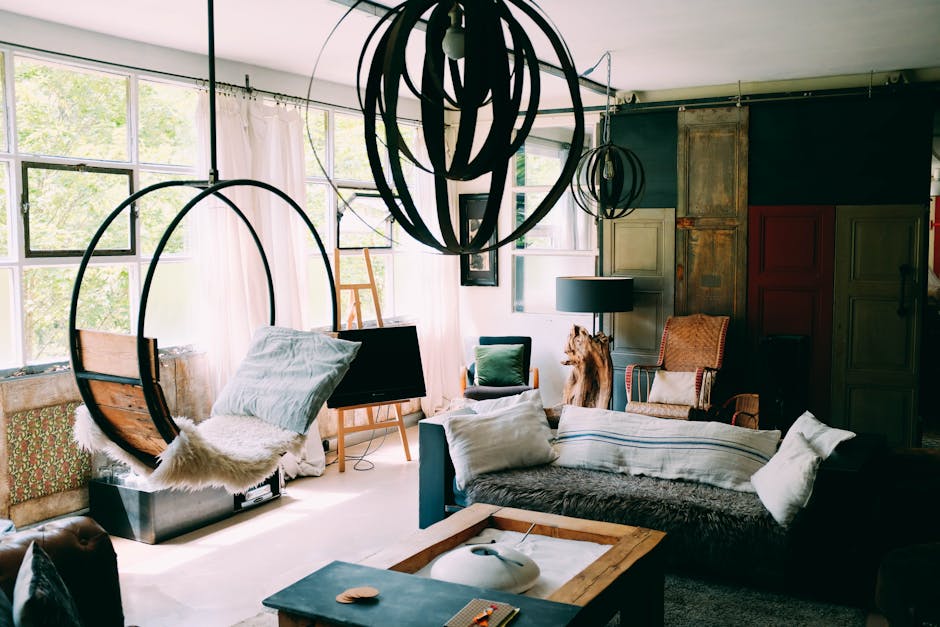The Ultimate Guide to Living Room Lighting Solutions
Lighting can make or break the atmosphere of any room, and the living room is no exception. It’s the heart of many homes, where relaxation, entertainment, and family time come together. Whether you’re unwinding with a book or hosting friends, the right lighting sets the tone. Many people overlook just how important it is to layer different types of lights or choose appropriate fixtures for this space.

But with a bit of thought and planning, you can create a warm and inviting ambiance that suits your style while also being functional.
Understanding the Types of Living Room Lighting
It’s important to understand the three primary types of lighting: ambient, task, and accent. Each plays a crucial role in ensuring your living room is well-lit for various activities.
Ambient lighting provides the general illumination for the room. This is usually achieved through ceiling-mounted fixtures like chandeliers or flush-mount lights. Think of this as your base layer of light, ensuring you can move around comfortably without straining your eyes.
Task lighting, on the other hand, is more focused. It’s designed to help you with specific tasks such as reading, knitting, or working on a puzzle. Table lamps, floor lamps near seating areas, or adjustable wall sconces are popular choices for adding task lighting to a living room.
Accent lighting adds drama and depth to your space by highlighting architectural features, artwork, or decorative elements. Spotlights, track lighting, and even small table lamps can be used to draw attention to these focal points while creating layers of interest.
Selecting Fixtures Based on Room Size and Layout
The size and layout of your living room will greatly influence which lighting solutions work best. A larger room with high ceilings might benefit from an oversized chandelier as a statement piece, while a smaller space could use more subtle options like recessed lights or slim-profile floor lamps.
If you have a sectional sofa or distinct seating areas in your living room, consider using multiple sources of light to zone these spaces. Pendant lights can hang over a cozy reading nook while an arched floor lamp could elegantly highlight your main seating area.
A helpful tip: pay attention to the color temperature of your bulbs. Warm white bulbs (2700-3000K) create a soft glow perfect for relaxing environments. In contrast, cooler light (4000K+) may feel too harsh for most living rooms but could work well in specific task-oriented areas such as near desks or reading corners.
Common Living Room Lighting Solutions
Once you've figured out what type of lighting you need based on your room's size and layout, it's time to explore specific lighting fixtures. Here are some common solutions that will enhance both function and style:
- Ceiling Lights: Chandeliers offer elegance while flush-mount fixtures are more practical for low ceilings.
- Floor Lamps: Perfect for adding height and light without needing additional furniture. They often work well next to couches or reading chairs.
- Table Lamps: These provide focused task lighting while doubling as decor elements on side tables or consoles.
- Wall Sconces: Great for ambient or accent lighting without taking up floor space.
- Recessed Lights: Ideal for larger rooms where you want a minimalist look without cluttering overhead space with bulky fixtures.
Energy-Efficient Lighting Options
Sustainability is increasingly becoming a consideration when choosing lighting solutions for any home. LED lights have gained popularity due to their energy efficiency and long lifespan compared to traditional incandescent bulbs. LEDs consume up to 75% less energy and last significantly longer (sometimes up to 25 times longer) making them an economical choice in the long run.
An easy way to integrate energy-efficient solutions into your living room is by choosing dimmable LED bulbs paired with smart switches or systems like Philips Hue or Lutron Caséta. These systems allow homeowners to control their lights remotely using smartphones or voice commands via smart home devices such as Amazon Alexa or Google Assistant.
| Lighting Type | Recommended Fixture | Ideal Placement |
|---|---|---|
| Ambient Lighting | Flush-mount ceiling fixture | Centered in the room |
| Task Lighting | Table lamp or floor lamp | Next to seating areas |
| Accent Lighting | Wall sconce or track lights | Around artwork or architectural features |
| Sustainable Option | Dimmable LED bulbs with smart switches | Main living areas where brightness needs vary throughout the day |
Choosing Your Living Room Lighting Solutions
Designing your living room’s lighting scheme is to think about how you use the space on a daily basis. If you're someone who enjoys reading by the fire in the evening but also loves hosting game nights with friends under brighter conditions, layering different types of light sources will give you flexibility in creating various moods. Don’t be afraid to mix it up by combining decorative statement pieces with functional lights that serve multiple purposes.
A well-lit living room doesn’t just look good; it enhances how you live in it. With careful planning and thoughtful selection of fixtures based on both form and function, you'll have a living room that's both stylish and practical for years to come.